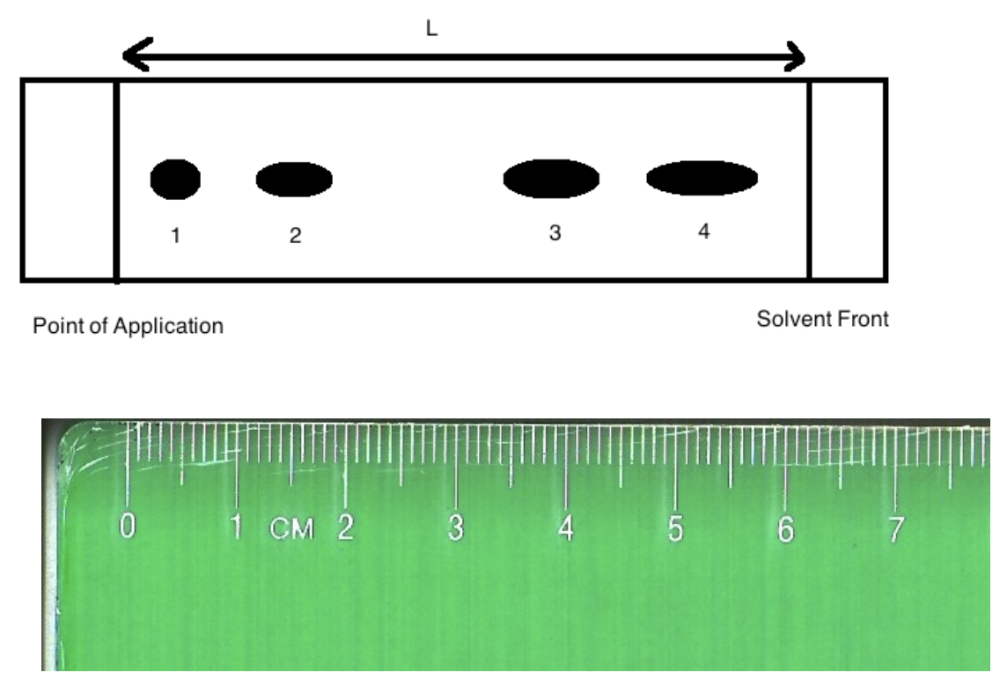
Image: TLC plate with point of application on left with 4 spots. The ruler underneath shows a distance of 6.20 cm from point of application to solvent front and 0.50 cm to spot 1, 1.50 cm to spot 2, 4.00 cm to spot 3 and 5.50 cm to spot 4. End of image.
The Rf of substance "3" is:
- 1
- 0.27
- 0
- 0.86
- 0.07
- 0.63

Rf of substance 3 = 4.00 cm / 6.20 cm = 0.65
0.63
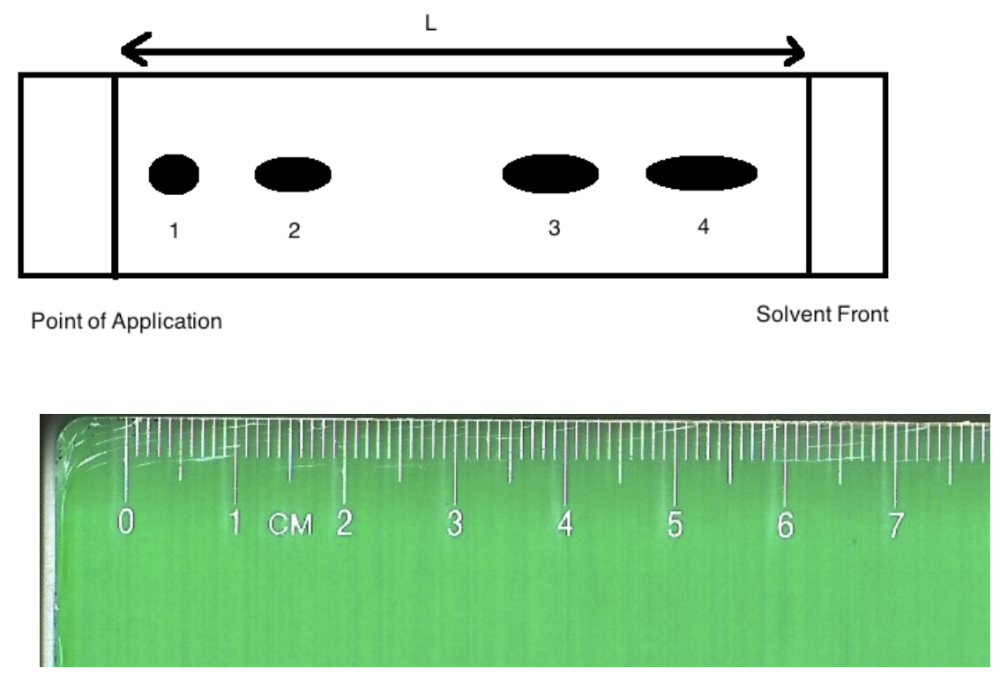
Image: TLC plate with point of application on left with 4 spots. The ruler underneath shows a distance of 6.20 cm from point of application to solvent front and 0.50 cm to spot 1, 1.50 cm to spot 2, 4.00 cm to spot 3 and 5.50 cm to spot 4. End of image.
The Rf of substance "4" is:
- 0
- 0.27
- 0.86
- 0.63
- 1
- 0.07
Rf of substance 4 = 5.50 cm / 6.20 cm = 0.89
0.86
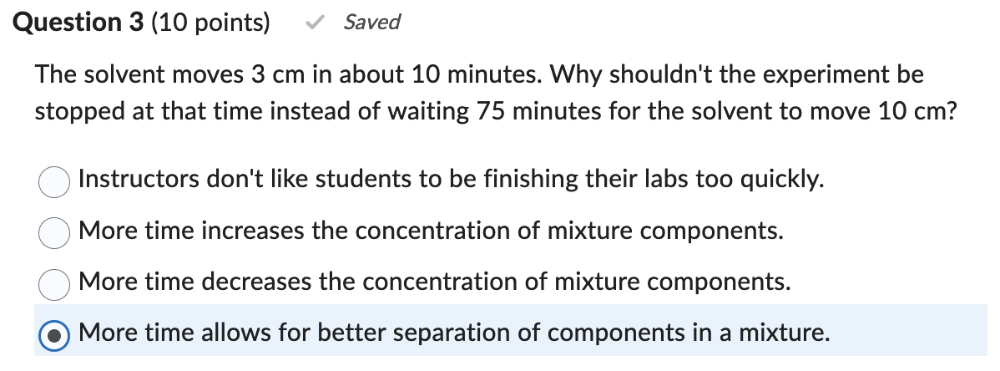
The solvent moves 3 cm in about 10 minutes. Why shouldn't the experiment be stopped at that time instead of waiting 75 minutes for the solvent to move 10 cm?
More time allows for better separation of components in a mixture.
In this experiment it takes about 10 microliters of solution to produce a spot 1 cm in diameter. If the C o (NO3)2 solution contains about 6 g C o2+ per liter, how many micrograms of C o2+ ion are there in one spot?
1 microliter = 1E-6 L
1 microgram = 1E-6 g
(6 g Co2+ / 1 L) x ( 1E-6 g / 1 microgram) x (1L / 1E-6 L) = 6
WRONG
Ex.
Followed this -> https://www.physicsforums.com/threads/simple-dimensional-analysis-problem-thanks-for-any-help.954241/
Real answer:
C= m / V -> m = C x V
m = C x V
6 g Co2+ / 1 L x 10 x 10-6 g =
60 x 10-6 g = 60 micrograms
Instructor use only. 5% = 2.5
...
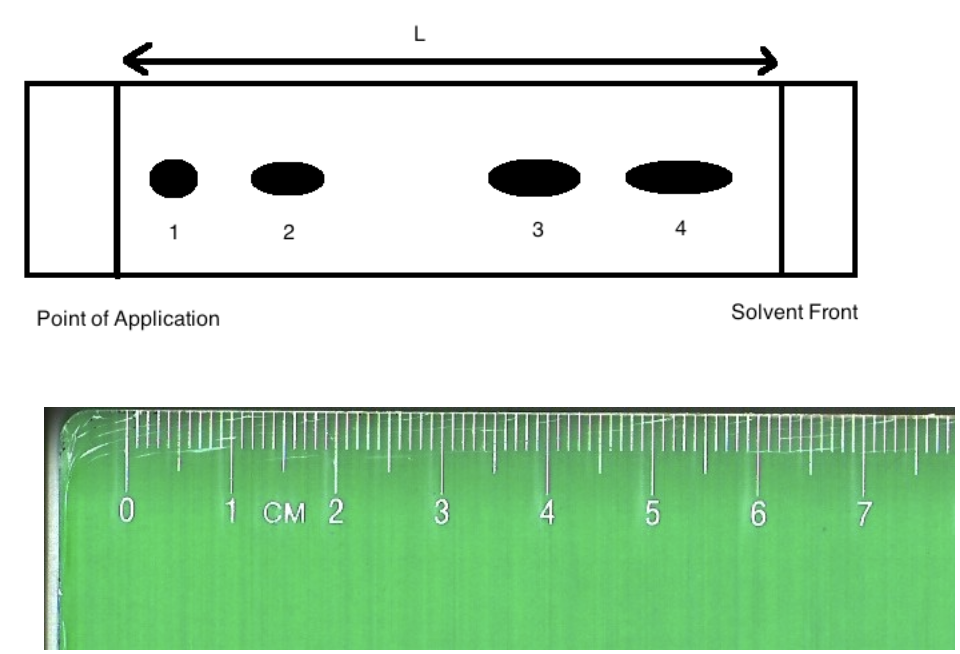
Image: TLC plate with point of application on left with 4 spots. The ruler underneath shows a distance of 6.20 cm from point of application to solvent front and 0.50 cm to spot 1, 1.50 cm to spot 2, 4.00 cm to spot 3 and 5.50 cm to spot 4. End of image.
The Rf of substance "3" is:
- 0.07
- 0.86
- 0.27
- 1
- 0.63
- 0
Rf of substance 3 = 4.00 cm / 6.20 cm = 0.65
0.63
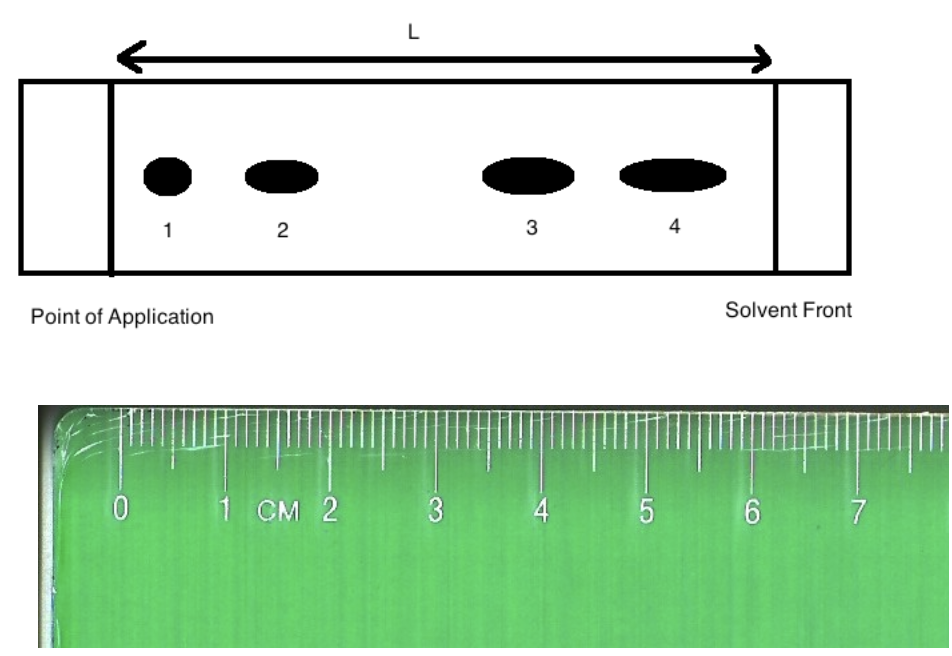
Image: TLC plate with point of application on left with 4 spots. The ruler underneath shows a distance of 6.20 cm from point of application to solvent front and 0.50 cm to spot 1, 1.50 cm to spot 2, 4.00 cm to spot 3 and 5.50 cm to spot 4. End of image.
The Rf of substance "4" is:
- 0.63
- 0.27
- 0.07
- 1
- 0
- 0.86
Rf of substance 4 = 5.50 cm / 6.20 cm = 0.89
0.86
The solvent moves 3 cm in about 10 minutes. Why shouldn't the experiment be stopped at that time instead of waiting 75 minutes for the solvent to move 10 cm?
- More time allows for better separation of components in a mixture.
- Instructors don't like students to be finishing their labs too quickly.
- More time decreases the concentration of mixture components.
- More time increases the concentration of mixture components.
More time allows for better separation of components in a mixture.
In this experiment it takes about 10 microliters of solution to produce a spot 1 cm in diameter. If the C o (NO3)2 solution contains about 6 g C o2+ per liter, how many micrograms of C o2+ ion are there in one spot?
1 microliter = 1E-6 L
1 microgram = 1E-6 g
C (concentration) = m (mass) / V (volume) -> m = C x V
m = C x V
(6 g Co2+ / 1 L) x 10 x 10-6 g =
60 x 10-6 g = 60 micrograms <- ?
Instructor use only. 5% = 2.5
...